If you have a 2008 or newer Jeep, your wheels will have come with TPMS or, valve stems that have a Tire Pressure Monitoring System. These sensors provide your Jeep's computer with real-time tire-pressure information and will alert you if one or more tires are running low on air. Unfortunately, TPMS valve stems are made out of ridgid aluminum and can be easily damaged on the trail. Once damaged, they can leak air or, prevent you from airing back up at the end of the day. Either way, a damaged TPMS will relegate your otherwise good tire unusable and force you to run your spare. Of course, that is only if you can't replace it and this Trail Fix Tip of the Day will help you to do just that.
What you will need
• 12mm Deep Socket
• Ratchet
• Valve Stem Installation Tool
• Snap-in Replacement Valve Stem with a .453" Rim Hole
• Hi-Lift Jack
• Air Compressor
• Another Jeep with Rocker Guards
Here is a shot of what at TPMS valve stem looks like after taking a hit on the trail.
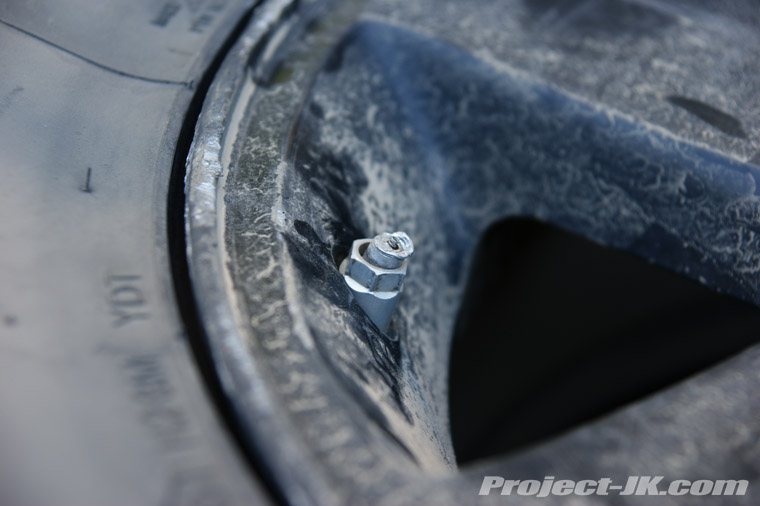 [/IMG][/IMG]
[/IMG][/IMG]
This is a shot of what the replacement valve stems you'll need look like as well as the tool required to install them. The tool can be purchased from Off Road Evolution.
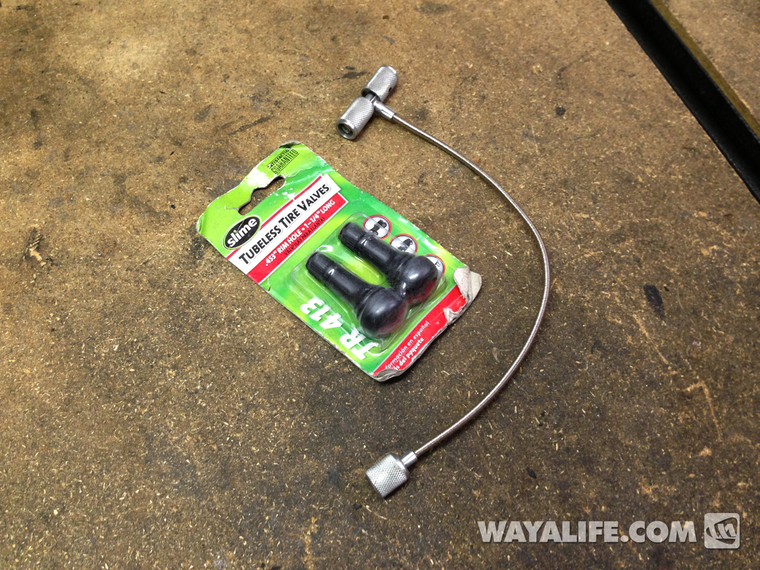
What you will need to do
1. Using a lug wrench or 19mm socket, crack the lug nuts loose on the wheel you need to repair. Use a jack to raise your Jeep from the base of your axle's differential or control arm joint and proceed to remove the wheel.
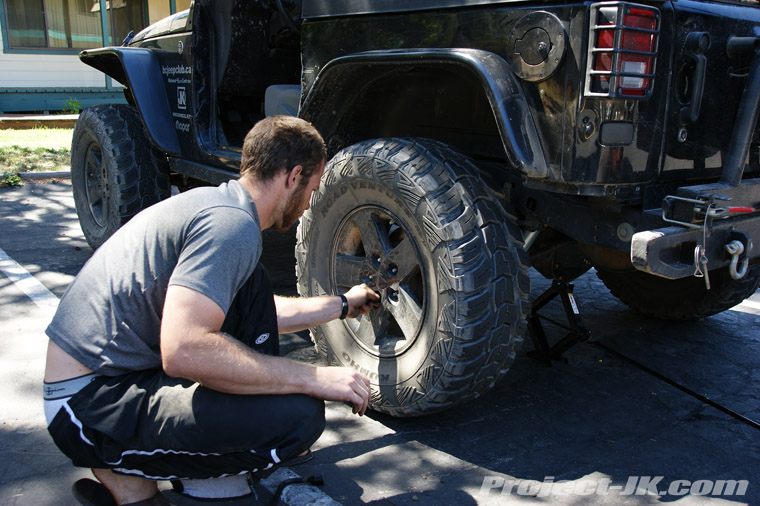
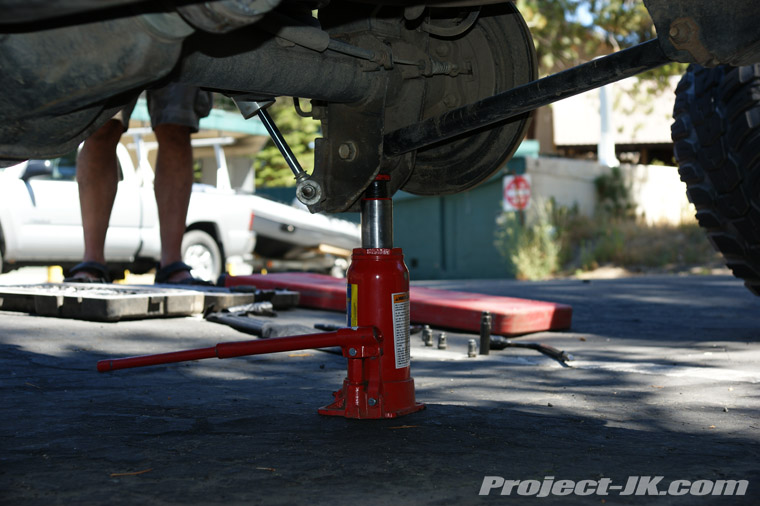
2. Place your tire under the rocker guard of another Jeep making sure that the sidewall and vavle stem are directly under it. Then, place the base of your Hi-Lift jack on the side wall and begin lifting the Jeep from the rocker guard as shown. This step will not actually raise your Jeep but rather, will break the bead of the tire.
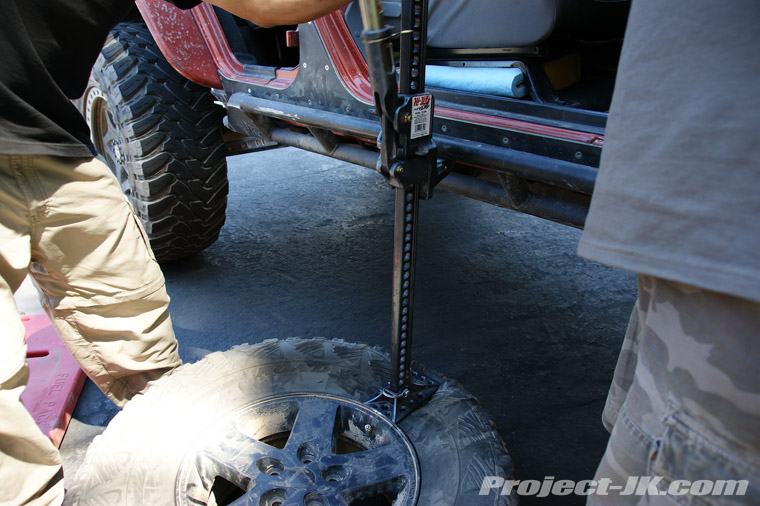
3. Use a deep 12mm socket to remove the TPMS retaining nut.
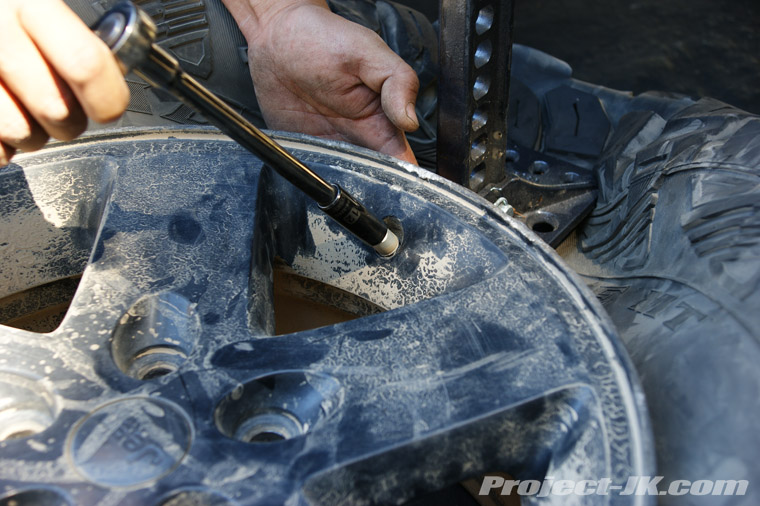
4. With the retaining nut removed, you should be able to simply pull out the TPMS sensor.
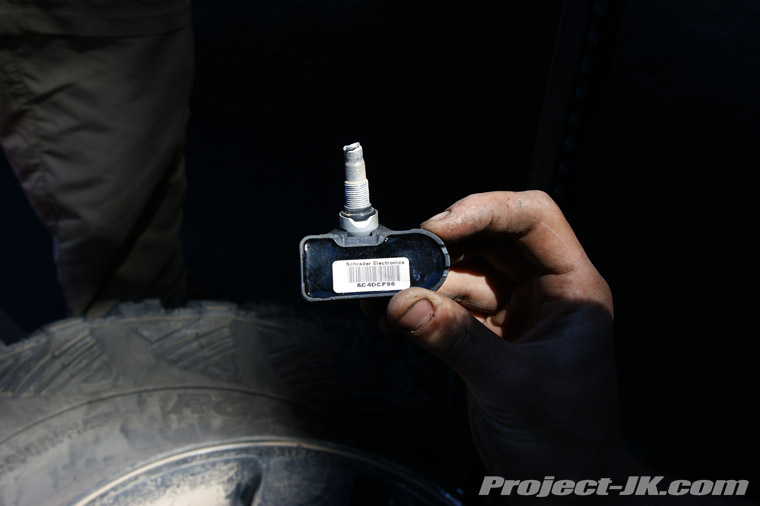
5. Insert the valve stem installation tool through the valve hole in valve hole in your wheel.
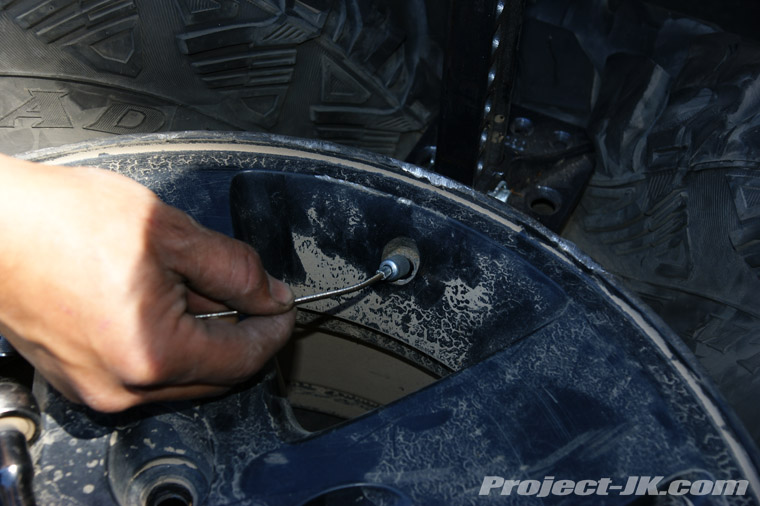
6. Affix your new replacement valve stem onto the installation tool as shown.
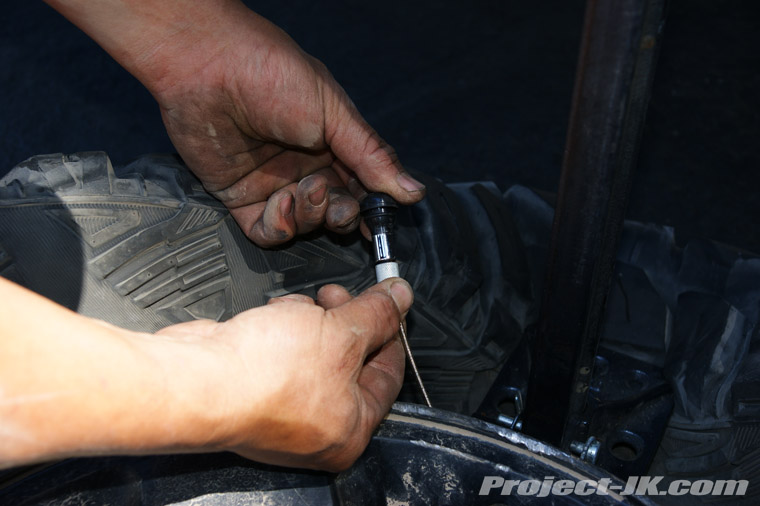
7. Carefully pull the new valve stem through the hole in your wheel until it pops in place. Being that you're just using a standard valve stem, no retaining nut will need to be installed.
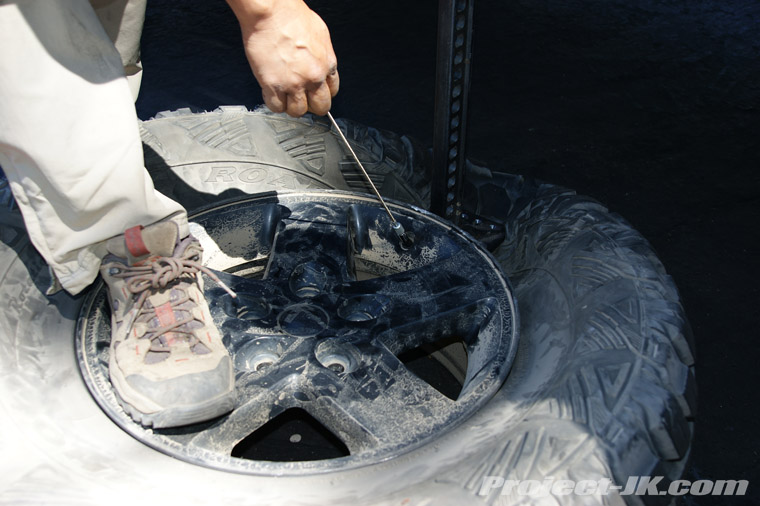
8. Lower and remove your Hi-lift jack. Pull up on the tire a bit so that the bead sits over the valve stem and then use an air compressor to reinflate your tire. It may be necessary to apply some soapy water or WD40 to the edge of the bead to help it pop back into place. Once it pops, continue airing up until you reach your desired air pressure.
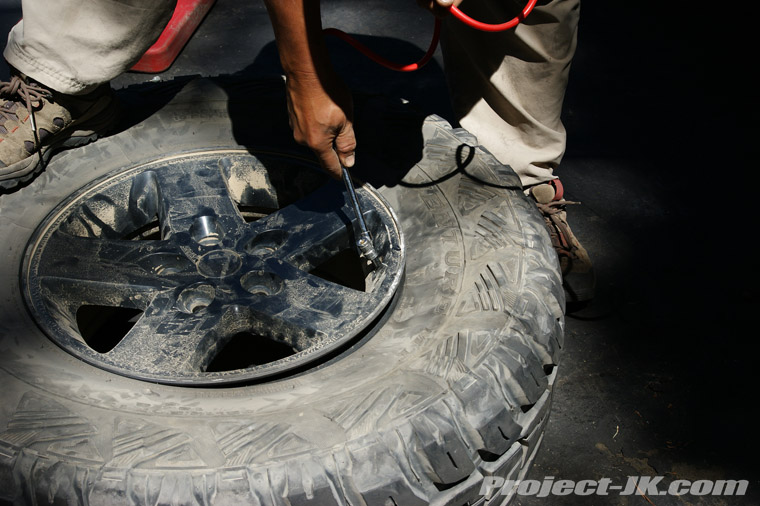
9. Reinstall your wheel, tighten your lug nuts to 95 ft. lbs. of torque, lower your Jeep back on the ground and you should be good to go.
Be advised that your TPMS light will come on your dash but, it's really isn't anything to be worried about. Once you get home, you can have a replacement TPMS sensor installed or, get an AEV Procal, Superchips Flashpaq or other programmer to turn off the indicator light.
What you will need
• 12mm Deep Socket
• Ratchet
• Valve Stem Installation Tool
• Snap-in Replacement Valve Stem with a .453" Rim Hole
• Hi-Lift Jack
• Air Compressor
• Another Jeep with Rocker Guards
Here is a shot of what at TPMS valve stem looks like after taking a hit on the trail.
This is a shot of what the replacement valve stems you'll need look like as well as the tool required to install them. The tool can be purchased from Off Road Evolution.
What you will need to do
1. Using a lug wrench or 19mm socket, crack the lug nuts loose on the wheel you need to repair. Use a jack to raise your Jeep from the base of your axle's differential or control arm joint and proceed to remove the wheel.
2. Place your tire under the rocker guard of another Jeep making sure that the sidewall and vavle stem are directly under it. Then, place the base of your Hi-Lift jack on the side wall and begin lifting the Jeep from the rocker guard as shown. This step will not actually raise your Jeep but rather, will break the bead of the tire.
3. Use a deep 12mm socket to remove the TPMS retaining nut.
4. With the retaining nut removed, you should be able to simply pull out the TPMS sensor.
5. Insert the valve stem installation tool through the valve hole in valve hole in your wheel.
6. Affix your new replacement valve stem onto the installation tool as shown.
7. Carefully pull the new valve stem through the hole in your wheel until it pops in place. Being that you're just using a standard valve stem, no retaining nut will need to be installed.
8. Lower and remove your Hi-lift jack. Pull up on the tire a bit so that the bead sits over the valve stem and then use an air compressor to reinflate your tire. It may be necessary to apply some soapy water or WD40 to the edge of the bead to help it pop back into place. Once it pops, continue airing up until you reach your desired air pressure.
9. Reinstall your wheel, tighten your lug nuts to 95 ft. lbs. of torque, lower your Jeep back on the ground and you should be good to go.
Be advised that your TPMS light will come on your dash but, it's really isn't anything to be worried about. Once you get home, you can have a replacement TPMS sensor installed or, get an AEV Procal, Superchips Flashpaq or other programmer to turn off the indicator light.
